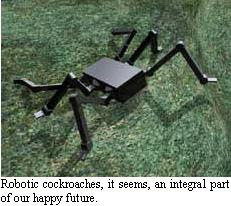Now other countries are trying to catch up on "robotic pioneers of bipedal locomotion."
Next, we consider four two-legged humanoid robot that could easily compete with the Asians. " It is worth noting that this is quite "adult" representatives of the robot race. " We do not take into account the "kids" type of Nao or components of mechanical robotic platforms that can run independently, but do not have a "trunk". This is a robot that could compete with Asimo in high-speed running or playing football.
Thus,
Robot REEM-B
The developer - the company Pal Robotics, Barcelona, Spain.
Robot REEM-B was designed for daily care to people in simple tasks. Built in 2008. Growth of the robot - 1.47 meters. He moves relatively slowly - at speeds of 1.5 kilometers per hour. However, thanks to a powerful actuator in his legs and arms, Reem-B is probably the strongest humanoid in the world. It can carry up to 12 pounds of payload in each hand. Is capable Asimo of this?
Robot JUSTIN
Developer - Institute of Robotics and Mechatronics German Space Center (DLR), city of Oberpfaffenhofen-Wessling, Germany
Justin - certainly one of the most impressive humanoid presented in recent years. His hands are oddly shaped are surprisingly nimble, and German researchers consistently trying to push the envelope in terms of design of hardware and software. Work continues on each new conference on robotics can be expected that Justin boast a new trick.
Worth pointing out that Justin is not yet in the full sense of humanoid robot. During recent demonstrations, he represented only the upper body - head, two arms and torso - that CDP be installed on a fixed basis, and on four-wheeled mobile platform. But in early 2010, researchers from DLR have already demonstrated a couple of "moving the limbs, which are likely in the near future will be kicked Justin. In this case, the legs use the same powerful engine as in the hands of the robot. The main idea of the developers - to combine based on the effects of torque control for biped balancing and walking. If the lower part of the body of Justin will be as nimble as his upper body, then the robot will be able to do things that previously did not make any robot in the world.
Robot CHARLI.
Developer - Robotics & Mechanisms Laboratory of the Polytechnic Institute and the University
of Virginia, of Blacksburg, USA. Чарли называют первым многофункциональным автономным передвигающимся гуманоидным роботом в натуральную величину, построенным в Соединенных Штатах. Фактически существуют две модели робота Чарли. Первый, меньший, названный CHARLI-L, использует для передвижения сервомоторы и систему механического привода. Вторая версия, CHARLI-H, более утяжеленная, оборудована специально разработанными линейными приводами, которые будут способны двигаться так же упруго, как человеческие конечности – вместо жесткой фиксации определенных положений. Суть новый разработок исследователи Лабоработии Robotics & Mechanisms пока не раскрывают.
Robot SURENA 2
Developer - University of Advanced Vehicles Center, Tehran, Iran.
Iranian Robot Surena 2 was submitted several months ago and at first summoned the skepticism of experts. However, it is worthy can take place among these humanoid robot counterparts. His height is 1.45 meters. Until he walks slowly enough, but it does have its advantages. The robot is able to bend down, stand on one leg and even perform something like a dance.
Finally try to answer one of the main questions: why do we need robots that walk like humans on two legs? After all, mobile wheeled platform seems to be more maneuverable, easier and cheaper to produce! It seems the need to have a robot on two legs is dictated by two conditions. First, if these robots are designed for our home or work items, they will have to overcome various uneven surfaces - such as stairs, fleecy carpets. Without the "rising" feet robots can not do. And secondly, trying to build a walking two-legged robots, we can better understand how our body moves - for example, as a ballet dancer can balance on the big toe or karate kicks to make devastating blows.
Write a humanoid capable of completely mechanically repeat the motion of every muscle in our body - not an easy task. Researchers around the world are fighting over it for more than three decades, and even that is reached, it seems a little childish little steps in that direction.

